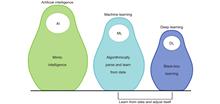 View fulltext
View fulltext
Current gradient-index (GRIN) lens based proximal-driven intracoronary optical coherence tomography (ICOCT) probes consist of a spacer and a GRIN lens with large gradient constant. This design provides great flexibility to control beam profiles, but the spacer length should be well controlled to obtain desired beam profiles and thus it sets an obstacle in mass catheter fabrication. Besides, although GRIN lens with large gradient constant can provide tight focus spot, it has short depth of focus and fast-expanded beam which leads to poor lateral resolution for deep tissue. In this paper, a type of spacer-removed probe is demonstrated with a small gradient constant GRIN lens. This design simplifies the fabrication process and is suitable for mass production. The output beam of the catheter is a narrow nearly collimated light beam, referred to as pencil beam here. The full width at half maximum beam size varies from 35.1 μm to 75.3 μm in air over 3-mm range. Probe design principles are elaborated with probe/catheter fabrication and performance test. The in vivo imaging of the catheter was verified by a clinical ICOCT system. Those results prove that this novel pencil-beam scanning catheter is potentially a good choice for ICOCT systems.
Phase-sensitive optical time-domain reflectometry (Φ-OTDR) has attracted numerous attention due to its superior performance in detecting the weak perturbations along the fiber. Relying on the ultra-sensitivity of light phase to the tiny deformation of optical fiber, Φ-OTDR has been treated as a powerful technique with a wide range of applications. It is fundamental to extract the phase of scattering light wave accurately and the methods include coherent detection, I/Q demodulation, 3 by 3 coupler, dual probe pulses, and so on. Meanwhile, researchers have also made great efforts to improve the performance of Φ-OTDR. The frequency response range, the measurement accuracy, the sensing distance, the spatial resolution, and the accuracy of event discrimination, all have been enhanced by various techniques. Furthermore, lots of researches on the applications in various kinds of fields have been carried out, where certain modifications and techniques have been developed. Therefore, Φ-OTDR remains as a booming technique in both researches and applications.
The control of ultrafast optical field is of great interest in developing ultrafast optics as well as the investigation on various light-matter interactions with ultrashort pulses. However, conventional spatial encoding approaches have only limited steerable targets usually neglecting the temporal effect, thus hindering their broad applications. Here we present a new concept for realizing ultrafast modulation of multi-target focal fields based on the facile combination of time-dependent vectorial diffraction theory with fast Fourier transform. This is achieved by focusing femtosecond pulsed light carrying vectorial-vortex by a single objective lens under tight focusing condition. It is uncovered that the ultrafast temporal degree of freedom within a configurable temporal duration (~400 fs) plays a pivotal role in determining the rich and exotic features of the focused optical field at one time, namely, bright-dark alternation, periodic rotation, and longitudinal/transverse polarization conversion. The underlying control mechanisms have been unveiled. Besides being of academic interest in diverse ultrafast spectral regimes, these peculiar behaviors of the space-time evolutionary beams may underpin prolific ultrafast-related applications such as multifunctional integrated optical chip, high-efficiency laser trapping, microstructure rotation, super-resolution optical microscopy, precise optical measurement, and liveness tracking.
We present a novel approach for tailoring the laser induced surface topography upon femtosecond (fs) pulsed laser irradiation. The method employs spatially controlled double fs laser pulses to actively regulate the hydrodynamic microfluidic motion of the melted layer that gives rise to the structures formation. The pulse train used, in particular, consists of a previously unexplored spatiotemporal intensity combination including one pulse with Gaussian and another with periodically modulated intensity distribution created by Direct Laser Interference Patterning (DLIP). The interpulse delay is appropriately chosen to reveal the contribution of the microfluidic melt flow, while it is found that the sequence of the Gaussian and DLIP pulses remarkably influences the surface profile attained. Results also demonstrate that both the spatial intensity of the double pulse and the effective number of pulses per irradiation spot can further be modulated to control the formation of complex surface morphologies. The underlying physical processes behind the complex patterns’ generation were interpreted in terms of a multiscale model combining electron excitation with melt hydrodynamics. We believe that this work can constitute a significant step forward towards producing laser induced surface structures on demand by tailoring the melt microfluidic phenomena.
In the recent years, a dramatic boost of the research is observed at the junction of photonics, machine learning and artificial intelligence. A new methodology can be applied to the description of a variety of photonic systems including optical waveguides, nanoantennas, and metasurfaces. These novel approaches underpin the fundamental principles of light-matter interaction developed for a smart design of intelligent photonic devices. Artificial intelligence and machine learning penetrate rapidly into the fundamental physics of light, and they provide effective tools for the study of the field of metaphotonics driven by optically induced electric and magnetic resonances. Here we overview the evaluation of metaphotonics induced by artificial intelligence and present a summary of the concepts of machine learning with some specific examples developed and demonstrated for metasystems and metasurfaces.













